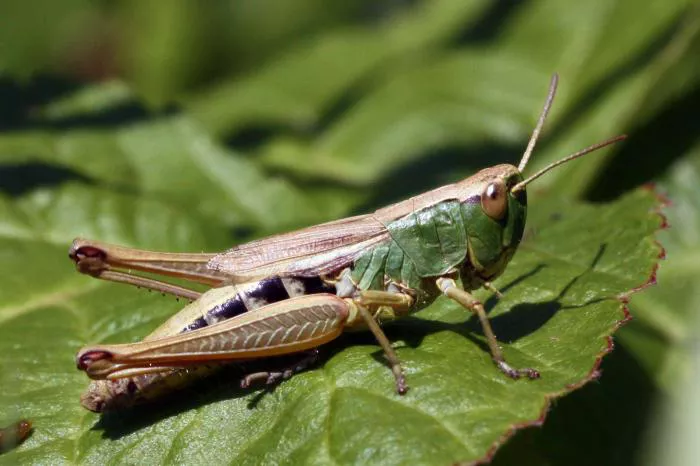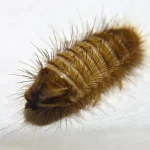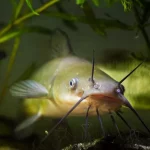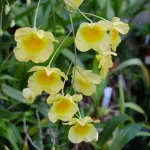The meadow grasshopper, a remarkable insect known for its vibrant green color and remarkable ability to leap, is often overlooked in discussions of symbolism in nature. However, this humble creature holds profound meanings across various cultures and belief systems. This article delves into the multifaceted symbolism of the meadow grasshopper, exploring its spiritual significance, interpretations in different cultures, meanings tied to various colors, symbolism in dreams, and the captivating myths and legends that surround it.
Meadow Grasshopper Spiritual Meaning
The spiritual significance of the meadow grasshopper is deeply rooted in themes of transformation, adaptability, and the importance of being present in the moment.
Transformation and Adaptability
Much like other insects that undergo metamorphosis, the meadow grasshopper symbolizes transformation. Its life cycle, from egg to nymph to adult, represents the various stages of personal growth. This adaptability is a powerful reminder that we too can evolve and change in response to our environments. The grasshopper’s ability to navigate different landscapes symbolizes resilience and the courage to embrace change, encouraging us to be flexible and open to new experiences.
Living in the Present
Grasshoppers are often associated with living in the moment due to their quick movements and lively behavior. Spiritually, this translates to a message about mindfulness. The meadow grasshopper encourages individuals to focus on the present and appreciate life’s fleeting moments. This perspective promotes a sense of gratitude and helps individuals cultivate a deeper appreciation for their surroundings and experiences.
Connection to Nature
The meadow grasshopper’s habitat in lush fields and meadows highlights the importance of our connection to nature. Spiritually, these creatures remind us to ground ourselves in the natural world, encouraging us to reconnect with the earth and its rhythms. They symbolize the beauty of simplicity and the vital role that nature plays in our lives.
Meadow Grasshopper Symbolism (In Different Countries)
Across cultures, the meadow grasshopper has been imbued with various meanings, often reflecting local beliefs, traditions, and environmental contexts. Here are some symbolic interpretations from different countries:
United States
In the United States, grasshoppers are often viewed as symbols of good luck and abundance. Many indigenous tribes consider the grasshopper a messenger, signaling the arrival of good fortune or a change in luck. Their presence is believed to indicate that positive changes are on the horizon.
Australia
In Aboriginal Australian culture, the grasshopper is sometimes seen as a totem animal that embodies agility and creativity. The grasshopper’s ability to jump long distances symbolizes the importance of taking leaps of faith and pursuing one’s passions. Grasshoppers are often included in storytelling and art, representing the connection between humans and the natural world.
China
In Chinese culture, grasshoppers are often associated with prosperity and happiness. They are sometimes kept as pets for their beautiful song and are seen as symbols of abundance. The sound of a grasshopper is believed to bring good fortune, and their presence in fields signifies a bountiful harvest.
Africa
In various African cultures, grasshoppers are seen as symbols of abundance and fertility. They are often associated with the agricultural cycle and are seen as signs of good harvests. Some tribes view grasshoppers as messengers from the spirit world, conveying important messages about the balance of nature and the importance of harmony in the environment.
Meadow Grasshopper Symbolism (With Different Colors)
The meadow grasshopper can exhibit a range of colors, each carrying its own symbolic significance. Understanding these variations can provide deeper insights into their meanings.
Green Meadow Grasshopper
The most common color for the meadow grasshopper is green, representing renewal, growth, and harmony. Green is often associated with nature and is a symbol of fertility and abundance. The green grasshopper encourages individuals to connect with their natural surroundings and emphasizes the importance of balance and tranquility in life.
Brown Meadow Grasshopper
Brown grasshoppers symbolize stability, groundedness, and practicality. Their earthy color reminds us of our connection to the earth and the importance of staying rooted in our values. Brown grasshoppers encourage us to embrace our responsibilities and remain practical in our pursuits.
Yellow Meadow Grasshopper
Yellow grasshoppers are less common but can symbolize optimism, joy, and enlightenment. The bright color encourages individuals to embrace positivity and look for the silver lining in challenging situations. A yellow grasshopper may appear during times of change, reminding us to maintain a hopeful perspective.
Black Meadow Grasshopper
Black grasshoppers, although rare, may symbolize introspection and the need to delve into the shadows of our consciousness. They remind us to confront our fears and uncertainties, encouraging personal growth through self-reflection. The black color often signifies transformation and the shedding of old beliefs or habits.
See also: 39 Meadow Grasshopper Quotes, Sayings, and Proverbs
Meadow Grasshopper Symbolize in Dreams
Dreams involving meadow grasshoppers can carry important messages about the dreamer’s emotional state, life changes, and personal growth. Here are some interpretations of such dreams:
Symbol of Change
Dreaming of a meadow grasshopper often signifies impending change or transformation in the dreamer’s life. Just as grasshoppers leap from one place to another, this dream may suggest that the dreamer is about to take a significant leap or embrace new opportunities. It encourages the individual to embrace change rather than resist it.
Freedom and Exploration
The freedom exhibited by grasshoppers can symbolize the dreamer’s desire for exploration and adventure. If a grasshopper appears in a dream, it may indicate a longing for more freedom in one’s life or an encouragement to explore new paths. This dream can inspire individuals to step outside their comfort zones and pursue their passions.
Mindfulness and Presence
Dreaming of a grasshopper can also serve as a reminder to be present and mindful in daily life. It encourages the dreamer to pay attention to their surroundings and appreciate the beauty in the moment. This dream may arise during times of stress or distraction, urging the individual to slow down and reconnect with their inner self.
Luck and Prosperity
Given the grasshopper’s association with good luck in various cultures, dreaming of a grasshopper may symbolize upcoming positive changes or financial prosperity. This dream can be interpreted as a sign that good fortune is on the horizon, encouraging the dreamer to remain open to opportunities and blessings.
THE Myths and Legends About Meadow Grasshopper
Throughout history, grasshoppers, including meadow grasshoppers, have appeared in various myths and legends, often embodying important themes and moral lessons. Here are some notable stories and beliefs:
The Ant and the Grasshopper Fable
One of the most famous stories featuring grasshoppers is Aesop’s fable of “The Ant and the Grasshopper.” In this tale, the grasshopper spends the summer singing and playing, while the ant diligently works to gather food for the winter. When winter arrives, the grasshopper finds itself starving and without shelter, while the ant is well-prepared. This fable teaches the importance of hard work, planning, and responsibility, showcasing the grasshopper’s carefree nature contrasted with the ant’s diligence.
Native American Legends
Many Native American tribes hold grasshoppers in high regard, viewing them as sacred beings. Some legends tell of the grasshopper as a creator or trickster figure, symbolizing change and adaptability. In these stories, grasshoppers may be seen as messengers from the spirit world, guiding humans in their endeavors or revealing important truths about life.
Grasshopper in Chinese Mythology
In Chinese mythology, the grasshopper is often associated with longevity and vitality. Some legends suggest that grasshoppers were once the guardians of harmony and balance in nature. Their songs were believed to attract good fortune, and their presence was seen as a sign of blessings from the heavens. In ancient times, people would keep grasshoppers as pets to ensure prosperity and abundance in their lives.
The Grasshopper as a Symbol of Resurrection
In various cultures, the grasshopper is linked to themes of resurrection and rebirth. This symbolism stems from the grasshopper’s ability to shed its exoskeleton and emerge renewed. In some myths, grasshoppers are seen as symbols of hope, representing the idea that even in times of darkness, renewal and transformation are always possible.
The Celtic Connection
In Celtic mythology, grasshoppers are associated with the goddess Brigid, the deity of poetry, healing, and fertility. In this context, the grasshopper is seen as a symbol of inspiration and creativity, encouraging individuals to express themselves and embrace their artistic passions. Grasshoppers are sometimes portrayed as messengers of the divine, carrying guidance and wisdom to those who seek it.
Conclusion
The meadow grasshopper is a remarkable creature that embodies a rich tapestry of symbolism and meaning. From its spiritual significance as a symbol of transformation and mindfulness to its varied cultural interpretations, the grasshopper serves as a reminder of the beauty and complexity of life. Its presence in dreams and folklore reinforces the idea that these tiny creatures play a vital role in our understanding of nature, change, and personal growth. As we observe the meadow grasshopper in its natural habitat, we are reminded of the lessons it imparts: the importance of adaptability, the value of living in the present, an
Related topics:













